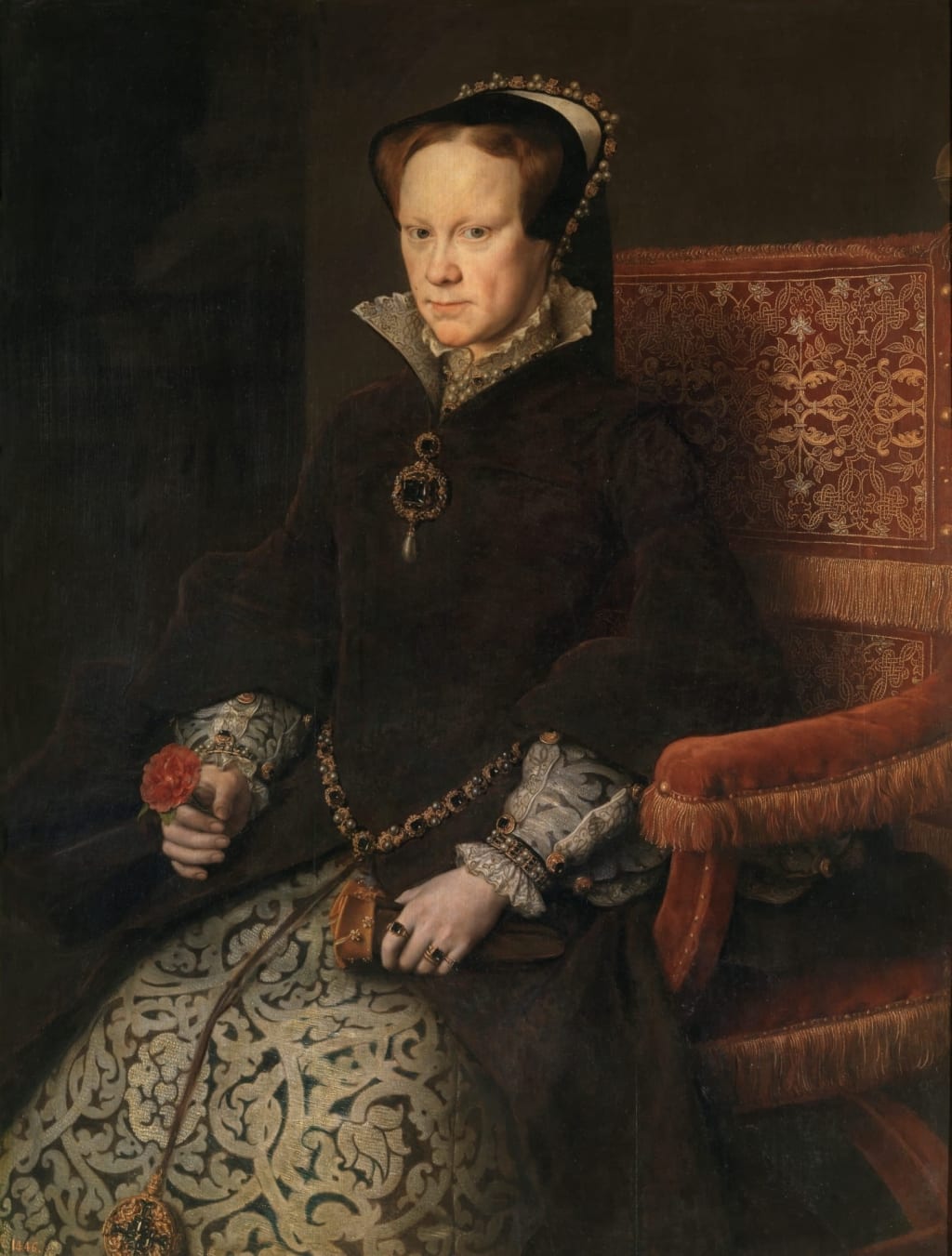The Vicious British Queen who Inspired the Bloody Mary Legend
Mary Tudor was the daughter of Henry VIII and a fierce feminist

According to legend, if you stand in a darkened room before a mirror and say the phrase 'Bloody Mary' three times, a ghost will appear through the mirror. What happens next varies, depending on who is telling the story. Some say the spirit scratches your eyes out; others say that it drinks your blood or that she chases you from the room with horrific screams.
The film, which depicts the legend, begins with a group of nurses daring a fellow nurse to go into the hospital's basement for a game of Bloody Mary. She releases the vengeful spirit and is snatched away. When Nicole is reported missing, her writer/reporter sister Natalie decides to investigate on her own.
As the film progresses, more people are killed by the spirit of Bloody Mary in gruesome ways. At the same time, Natalie uncovers clues about the truth behind her sister's disappearance and Mary herself.
The Creation of a Legend
The most likely explanation for where the legend comes from is the reign of Mary Tudor of England. Mary was the first woman to rule England in her own right. However, she did not inherit the throne; she seized it. She showed ambition and determination rarely seen in women in these times.
She rode into London on August 3, 1553, to widespread acclaim. In the words of one contemporary chronicler, "It was said that no one could remember there ever having been public rejoicing such as this. - Sarah Gristwood
Centuries later, though, the people's opinion changed, and Mary is now remembered as one of the most reviled figures in English history. In truth, she was no bloodier in her reign than her father Henry VIII; however, the gender divide created the myth of Bloody Mary.
Mary Tudor's
Mary was born in 1516 to parents Henry VIII and Catherine of Aragon, the first wife of the monarch. Despite the fact she was not the son that the King craved, she grew up in the public eye as a beloved princess, until her father met and fell in love with Anne Boleyn.
The infatuation with Anne led the King to divorce Mary's mother. To do so, he needed to break the Catholic Church, as divorce was not permitted. As a teenager, Mary found herself downgraded from princess to lady and separated from her mother. She rebelled against this; as a Catholic, she refused to acknowledge the divorce and would not validate her father's new Church of England. This father, daughter feud would carry on for many years, until 1536 when her father executed Anne Boleyn and married Jane Seymour.
She was welcomed back to the royal court. There she went on to survive her father and three more stepmothers. On her father's death, she watched as her Protestant half-brother took the throne, Edward VI. Edward died six years later, and obeying his father's wishes, tried to leave the crown to his cousin Lady Jane Grey. The natural succession to the throne was both Mary and her half-sister Elizabeth. Instead of running and hiding with relatives in Europe, Mary chose to fight for what was hers; she rallied support and rode into England's capital, with Elizabeth at her side as Queen in waiting.
A Five Year Reign
Mary reigned for five years. It is fair to say she met a large amount of opposition, being the first Queen to rule in her own right, rather than as a wife of a King. Her priority was religion, where she wanted to reverse her father's creation of the Church of England and restore the Catholic power. Mary was a Catholic monarch who presided over the often violent persecution of her Protestant subjects. Most controversially, she ordered 280 Protestants burned at the stake as heretics.
Such a death was an undoubtedly horrific sentence. But in Tudor England, bloody punishments were the norm, with execution methods ranging from beheading to boiling; burning at the stake; and being hung, drawn and quartered.
Mary and her advisors hoped the initial spate of burnings would warn Protestants and convince them to rejoin the Catholic religion. In a January 1555 memorandum, the Queen explained that executions should be "so used that the people might well perceive them not to be condemned without just occasion, whereby they shall both understand the truth and beware to do the like." But Mary had grossly underestimated Protestants' tenacity and their willingness to die for the cause.
Remembering her for this one act, though, is unfair as it does not look at the other reforms she accomplished in her short reign; she laid the groundwork for many reforms such as financial and naval expansions. Mary had a series of false pregnancies and miscarriages, which could explain the idea of the ghost having a dead child. As Mary failed to produce an heir, her sister Elizabeth claimed the throne when she died at forty-two.
The executions were the main reason Mary was confined to the history books as one of the evilest humans of all time and gained her nickname, Bloody Mary. However, considering that her father executed as many as 72000 of his subjects, including two wives, it seems unfair that Mary gained this title. For all her faults, Mary was the first to prove women could rule England with the same authority as men.
Bloody Mary
Although the name Bloody Mary is confirmed in history books as Mary Tudor, the idea that you may see something if you stare into a dark mirror could predate the Queen Mary legend. Long before people believed you could summon a ghost through a mirror in a dark room, they thought that you could see the face of your future lover inside of it.
Researchers have determined that subjects who stare at their reflection in a dark room often begin to hallucinate strange faces in the mirror. It could be that the different mirror legends grew out of this fact and were eventually combined with the myth of "Bloody Mary" to give us the version we have today.
It is likely that the legend of Bloody Mary is a combination of these stories and several others. Whether these premonitions are a figment of imagination, a scary film or a paranormal event, I will not say Bloody Mary in the mirror. Will you?
Thank you for reading. If you enjoyed this article, please follow me, share it and give it a like. As a writer tips mean a great deal to me, so a massive thank you if, you send one.
About the Creator
Sam H Arnold
A writer obsessed with true crime, history and books. Find all my dedicated newsletters whether you are a true crime fan, bookworm or aspiring writer on Substack - https://substack.com/@samharnold
Reader insights
Nice work
Very well written. Keep up the good work!
Top insights
Easy to read and follow
Well-structured & engaging content
Excellent storytelling
Original narrative & well developed characters
Expert insights and opinions
Arguments were carefully researched and presented
Eye opening
Niche topic & fresh perspectives







Comments (1)
Excellent! I love Tudor period and I think the reign of Mary I is truly misunderstood. She was very much the most traumatized and beaten down member of that dysfunctional family, but not nearly the psychopath her father was. I would still never repeat her name before a mirror in a dark room with a candle in my hand.